
Pierre Henry Prosper Baccuet (30 October 1797, Paris - 28 June 1854, Paris) [1] was a French military officer and landscape painter; known primarily for his Orientalist scenes.

Pierre Henry Prosper Baccuet (30 October 1797, Paris - 28 June 1854, Paris) [1] was a French military officer and landscape painter; known primarily for his Orientalist scenes.
He was the son of a merchant. In 1813, before he was quite sixteen, he enlisted as a quartermaster in the artillery train of the Garde Napolitaine; a unit of the short-lived Napoleonic Kingdom of Naples. By the following year, he had become a sergeant in the Chevau-léger (cavalry) of the same unit and, eventually a Sous-lieutenant in the line infantry.
After the fall of Joachim Murat, the nominal King of Naples, his unit was incorporated into the equivalent unit of the French army. From there, he went into the 7e régiment de chasseurs à cheval (another cavalry group) then, in 1820, into the Grenadiers on Horseback guard, who were part of the Maison militaire du roi de France. He became a full Lieutenant in 1827.

That guard was dissolved following the July Revolution, but he was recalled to the 10th Regiment of cuirassiers a year later and was promoted to captain shortly thereafter. He participated in the Ten Days' Campaign of 1832, received the Legion of Honor in 1833 [2] and retired in 1846.
Parallel to his military career, when he was stationed in Paris, he decided to pursue a long-standing interest in art and studied with the landscape painter, Louis Étienne Watelet. He had his first exhibit at the Salon in 1827, the year he became a lieutenant. The following year, his artistic talents obtained him a position as an official painter with the Morea Expedition, from which he returned with numerous landscapes and sketches.
From 1841 tp 1845, he served in North Africa as a painter/draftsman with the Commission d'exploration scientifique d'Algérie , and participated in an expedition to Kabylie. During this time, he painted landscapes, ancient ruins, and scenes depicting the French conquest of Algeria. Towards the end of his time there, he began a correspondence with the art critic, Théophile Gautier, and became his friend. [3]
After returning to Paris, his exhibitions at the Salon included Mediterranean landscapes of Spain and Italy as well as North Africa. Many of these works have made their way into public collections; including the Louvre, Musée des civilisations de l'Europe et de la Méditerranée, Musée des beaux-arts de Bordeaux, the Musée départemental d'Art ancien et contemporain and the Musée d'art moderne André-Malraux.
His works were also used as illustrations in the Exploration scientifique de l'Algérie 1844–1867, published by the Imprimerie Nationale.

Jean-Baptiste Geneviève Marcellin Bory de Saint-Vincent was a French naturalist, officer and politician. He was born on 6 July 1778 in Agen (Lot-et-Garonne) and died on 22 December 1846 in Paris. Biologist and geographer, he was particularly interested in volcanology, systematics and botany. The standard author abbreviation Bory is used to indicate this person as the author when citing a botanical name.
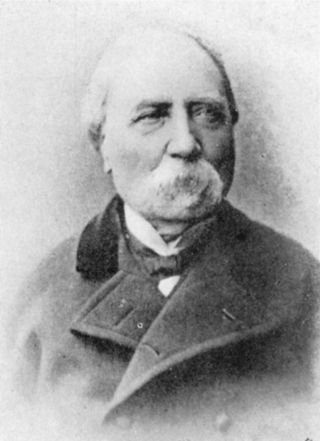
Pierre-Hippolyte Lucas was a French entomologist.
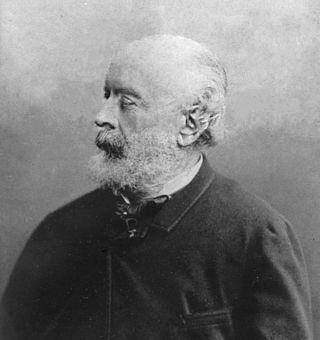
Évariste Vital Luminais was a French painter. He is best known for works depicting early French history and is sometimes called "the painter of the Gauls".
Louis Candide Boulanger was a French Romantic painter, pastellist, lithographer and a poet, known for his religious and allegorical subjects, portraits, genre scenes.

Hendrik Scheffer was a Dutch painter in the Romantic tradition who lived in France for most of his life. In France he is usually known as Henri Scheffer.
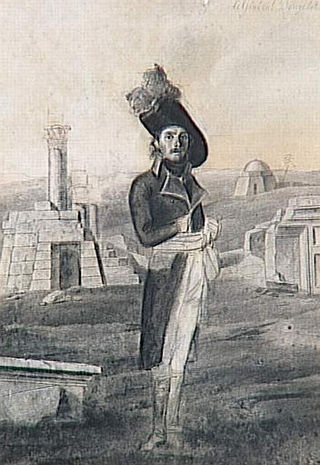
André Dutertre was a French painter.
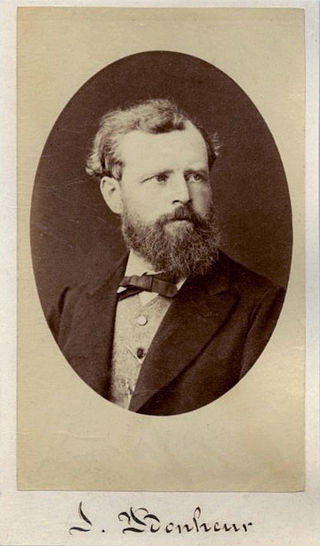
Isidore Jules Bonheur, best known as one of the 19th century's most distinguished French animalier sculptors. Bonheur began his career as an artist working with his elder sister Rosa Bonheur in the studio of their father, drawing instructor Raymond Bonheur. Initially working as a painter, Isidore Jules Bonheur made his Salon debut in 1848.

Antoine-George-Prosper Marilhat, usually known as Prosper Marilhat, was a French Orientalist painter. Many of his most successful works were based on the sketches he drew during the time he spent in Egypt in 1831–1832.

Paul Biva was a French painter. His paintings, both Realist, Naturalist in effect, principally represented intricate landscape paintings or elaborate flower settings, much as the work of his older brother, the artist Henri Biva (1848–1929). Paul Biva was a distinguished member of National Horticultural Society of France from 1898 until his untimely death two years later.

Auguste Bonheur was a French painter of animals and bucolic scenes in landscapes. In his compositions he was able to accurately depict the horizon, ambience, luminous settings and space. His works show the influence of the paintings of cattle by seventeenth-century Dutch painters such as Aelbert Cuyp and Paulus Potter.

Joseph Vincent François Courdouan was a French painter who specialized in maritime scenes.

Louise-Joséphine Sarazin de Belmont (1790–1871) was a French landscape painter and lithographer.

Auguste-Xavier Leprince was a French artist and painter who attained celebrity at the age of seventeen. His patrons included the Duchesse de Berry, Charles X, and Alexandre du Sommerard. He was also a teacher; in his twenties he established his own atelier in Paris, with pupils including his two younger brothers, Robert-Léopold and Pierre-Gustave, as well as Eugène Lepoittevin and Nicolas Alexandre Barbier. His meteoric career came to an abrupt end and his "brilliant promise was cut short by his premature death at the age of twenty-seven."
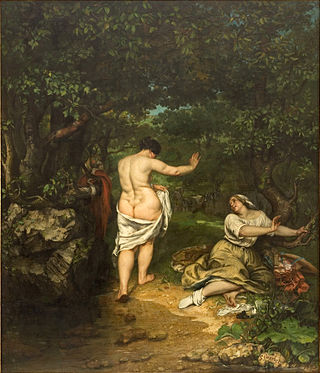
The Bathers is an oil-on-canvas painting by the French artist Gustave Courbet, first exhibited at the Paris Salon of 1853, where it caused a major scandal. It was unanimously attacked by art critics for the huge nude woman at its centre and the sketchy landscape background, both against official artistic canons. It was bought for 3000 francs by Courbet's future friend Alfred Bruyas, an art collector – this acquisition allowed the artist to become financially and artistically independent. It is signed and dated in the bottom right hand corner on a small rock. It has been in the musée Fabre in Montpellier since 1868.

Louis Étienne Watelet was a French landscape painter and art teacher.

Louis Ferdinand Antoni was a French Orientalist painter and sculptor.

Charles-Caius Renoux was a French painter, lithographer, and illustrator. He first achieved success with paintings of medieval churches, particularly the ruins of cloisters and monasteries destroyed during the French Revolution, works for which he is still best known. Renoux also painted landscapes, large-scale battle scenes, and historical subjects, works which uniquely prepared him for the final phase of his career, the creation of spectacular dioramas, the “moving pictures” of the era. He also taught at the École des Beaux-Arts in Paris; his notable students included Narcisse Berchère and Hector Hanoteau.

Hocine Ziani is an Algerian painter and artist in plastic arts.

Eugène Baudouin was a French painter and printmaker.
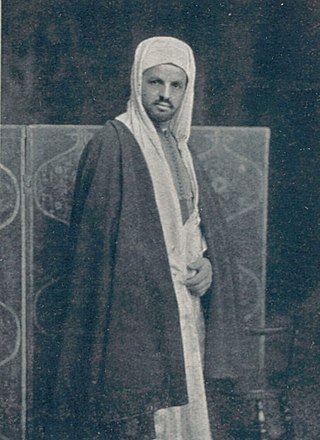
Azouaou Mammeri, also known as Si Azouaou Mammeri, was an Algerian painter born in 1890 or 1892 in the village of Taourirt-Mimoun which was part of Aït Yenni. He died on September 17, 1954, in Aït Yenni.

![]() Media related to Prosper Baccuet at Wikimedia Commons
Media related to Prosper Baccuet at Wikimedia Commons